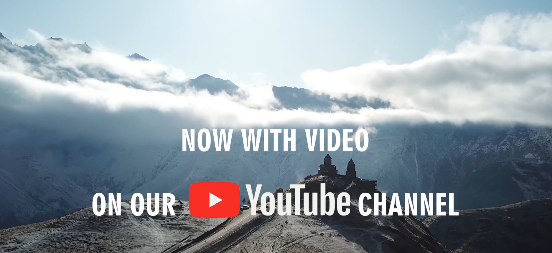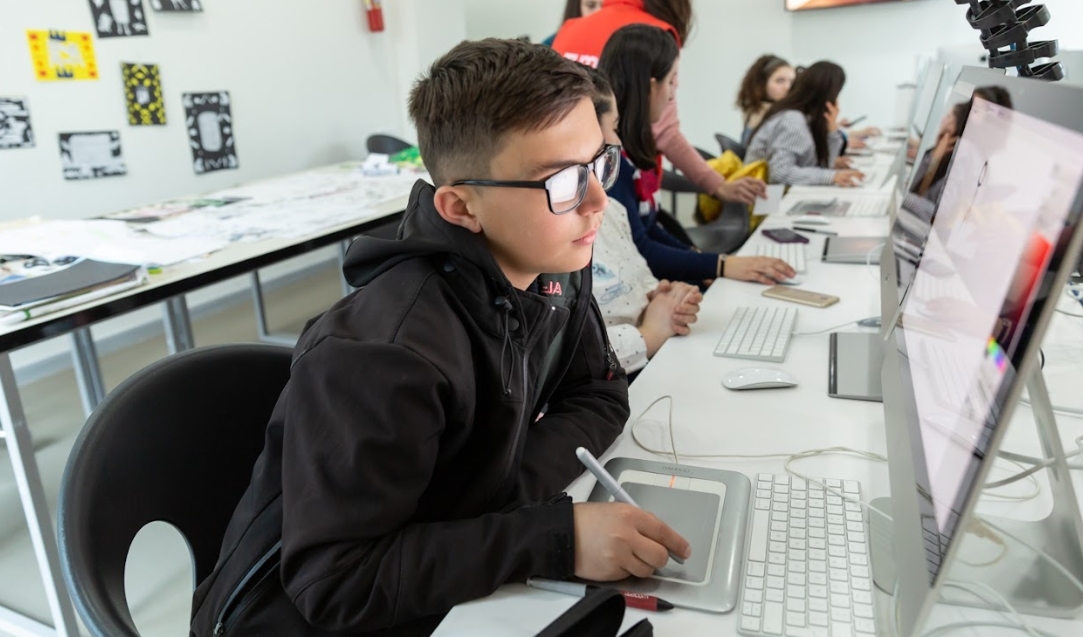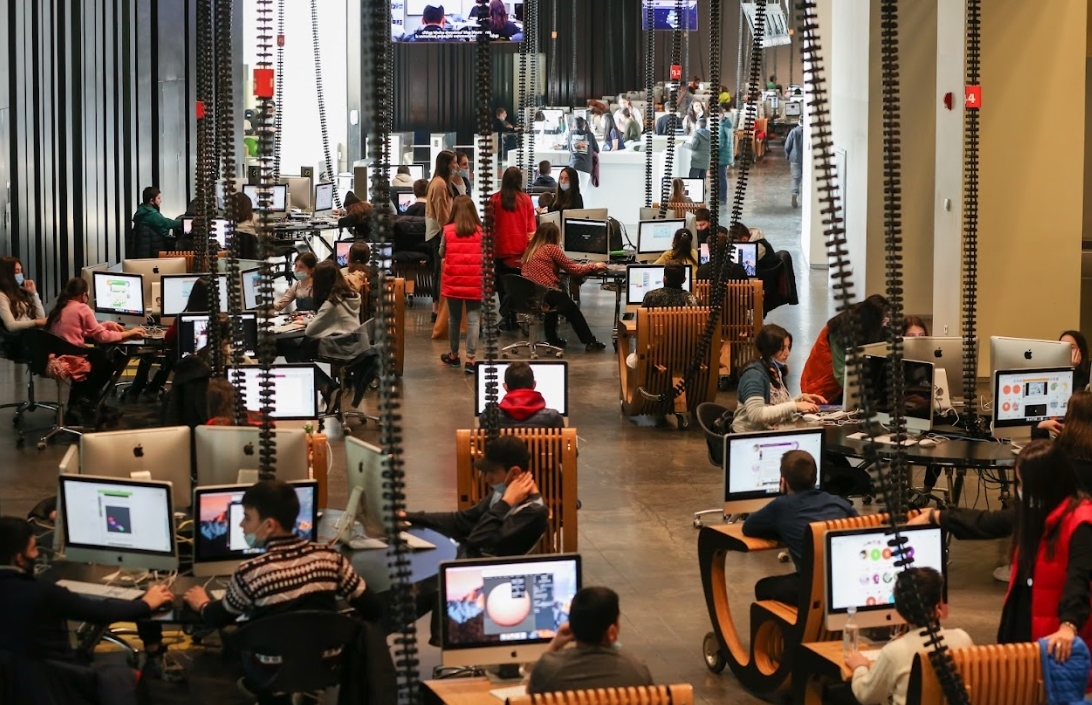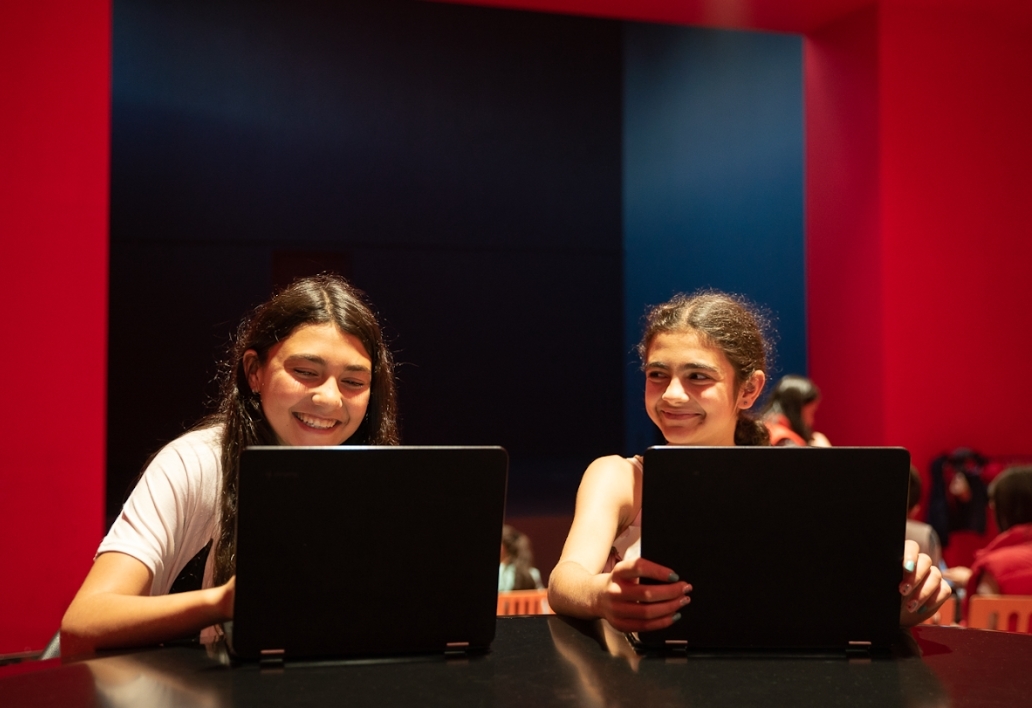07.07.2022 (Caucasian Journal) Our guest is Pegor PAPAZIAN, Chief Development Officer, TUMO Center for Creative Technologies (Armenia). TUMO is an international network of schools for teenagers (12-18 years) that offer free education in IT, technology, and design, founded in 2011 in Yerevan. While major part of centers are located in Armenia, TUMO has opened its schools in many countries.
The TUMO's menu of courses sounds tempting for nearly every world's teenager: Animation, Game Development, Filmmaking, Web Development, Music, Writing, Drawing, Graphic Design, 3D Modeling, Programming, Robotics, Motion Graphics, Photography, New Media... Is it all available for free? Which countries are lucky to have TUMO centers already, and which are on the waiting list?
Pegor PAPAZIAN: TUMO is a program initially developed by our founding benefactors Sam and Sylva Simonian, my wife Marie Lou and myself. Marie Lou and I had just moved to Armenia with our five children who went into the local education systems at various grade levels, and the TUMO program was conceived as a complement to that education system, largely inherited from the Soviet Union, that was missing, at the time, many important pedagogical foundations. The education system was too focused on identifying and developing a small intellectual elite, often chosen arbitrarily, at the expense of the huge potential of the majority of school children. Over time, we realized that what we had created essentially as an “antidote” to that ineffective system of education was actually in high demand not just in Armenia, but across the world.
AK: I think some of the current TUMO’s facts and figures would be quite interesting to quote. For example, how many students have been educated since launch, and how many are now enrolled – in Armenia and abroad? How many centers are in TUMO’s network? Is it true that virtually all the Armenia’s IT sector, including the best and brightest startups, have passed through TUMO schools? You are welcome to share all facts, names, stats that you deem relevant.
We created an “antidote” to ineffective system of education inherited from the Soviet Union.
PP: In Armenia and Artsakh [Nagorno-Karabakh Republic - CJ], there are four TUMO centers operating in Yerevan, Gyumri, Dilijan, and Stepanakert. This number is set to increase to 16 by 2026, complemented with 110 smaller satellite “TUMO Boxes” in villages. TUMO’s international network consists of seven centers, but is growing rapidly, with several more centers scheduled to be announced next year. Every week, over 25,000 students walk through the doors of the TUMO centers around the world. Since TUMO’s launch in 2011, over 80,000 students have been a part of the TUMO story. TUMO alumni work at top Armenian tech companies like Picsart, Krisp, and EPAM Systems; others have launched their own tech and design start-ups.
AK: An introduction about the education process at TUMO is essential. According to a self-description, TUMO is a “program that puts teens in charge of their own learning”. And Rev Lebardian in his interview mentioned “gamification of the learning process”. In practical terms, what does that mean for a student, and what is so unique about your learning concept? Are there any tests or exams, or is all control left in each student’s hands?
We call our philosophy “walk-away” pedagogy. It tries to answer the question “what would education look like if students were not obliged to attend school, if they could walk away”.
PP: TUMO has no entrance requirements, no exams, no grades, no class cohorts, no school year, no certification, and also no teachers, in the sense that our workshop leaders are industry professionals, not career educators, and our learning coaches are just that – coaches who help get students unstuck, who help and advise them, but who do not teach. TUMO students alternate between guided self-learning with the help of coaches and creative learning with workshop leaders. In addition, they participate in challenging projects led by volunteer industry professionals, typically from abroad. We call our pedagogical philosophy “walk-away” pedagogy. It is based on the idea of conceptual learning, and tries to answer the question “what would education look like if students were not obliged to attend school, if they could walk away.” TUMO’s answer is based on a set of seven principles, including choice and hyper-personalization, mixing of age groups, alternating individual and group learning, etc.
AK: If I understand correctly, TUMO does not issue diplomas, but offers some help with employment. How is this working?
We focus on fostering a future-ready generation of professionals...
Each student has a personal online portfolio that is automatically updated with student’s work product. That kind of “living diploma” is what future employers, universities and parents would prefer to see.
PP: TUMO’s aim is to support every teenager so they can expand and achieve their maximum potential. This is first and foremost a rights issue – young people have the right to prioritize their development; but it is also a social and economic development issue. We believe that young people who are in charge of their own development, and who thereby acquire technical skills and, most importantly, higher order aptitudes such as self-confidence, communication, the ability to work in teams and to learn autonomously, that they become unstoppable and propel their societies, countries and the world forward. Rather than focusing on job creation or the market readiness of teenagers, we focus on fostering a future-ready generation of professionals, entrepreneurs, leaders and inventors. And, yes, it’s true, we do not give diplomas. Instead, each student has a personal online portfolio that is automatically updated and populated with the student’s work product, whether it is a software application, an animated film, a 3D model or a video game. That kind of “living diploma” is what future employers, university admissions departments and parents would prefer to see, rather than a certificate.
Student and parent are the ones who should be getting paid rather than the other way around, as they are the ones adding value to society by learning and educating.
AK: Let me quote the education subjects that TUMO offers: Animation, Game Development, Filmmaking, Web Development, Music, Writing, Drawing, Graphic Design, 3D Modeling, Programming, Robotics, Motion Graphics, Photography, New Media. Wow, quite a list! I am sure most of the world’s teenagers (and not only teenagers) would be excited – and even envious. And all this wealth of knowledge is indeed available for free?
PP: Yes, TUMO centers are free of charge. Making TUMO free of charge ensures access and equity. But there is a second important reason why programs like TUMO need to be free: When students learn, when parents nurture the education of their children, they are making a significant contribution to the development of their societies and countries, including its economic development. If anything, student and parent are the ones who should be getting paid rather than the other way around, they are the ones adding value to society by learning and educating. And, finally, a third reason: If TUMO charged a fee, eventually, a center manager somewhere can feel compelled to increase revenues, or optimize for profit – not for personal gain, but for the success and expansion of the program. And that can easily lead to lower standards from the point of view of learning effectiveness, therefore the attraction of a free of charge model.
AK: Who are the teachers at TUMO? How do you ensure the high professional level of all the teachers – including the foreign TUMO centers?
PP: We have a rigorous training program for coaches and a separate one for workshop leaders and center managers. We also prefer our workshop leaders to work part time at TUMO so they can keep exercising their professions the rest of the time and thereby stay abreast of new developments in their respective fields. We offer those same training services both in Armenian centers and abroad.
AK: TUMO is neither backed by government’s money, nor charges a tuition fee. Obviously you have a unique financing model that proves very successful. Can you tell about it?
PP: In Yerevan - our flagship location - where we also have our various headquarter functions such as engineering, instructional design, communication, legal, etc., we are financially self-sufficient due to a very judicious decision by our founding benefactors and partners, Sam and Sylva Simonian: They donated to TUMO a large office building where we occupy the first two floors and rent out the top four floors to technology companies. The rental income from those tenants covers our operating expenses. This model is also being adopted in other locations, such as Tirana, where a large structure includes both TUMO and office and retail facilities whose rental payments subsidize TUMO. As we expand beyond Yerevan, we fundraise to cover capital expenditures of new centers and boxes, and the first 2-3 years of their operating expenses. But the ongoing operation expenses will be covered by revenues generated from recurring annual license fees from our centers around the world.
AK: I think the TUMO’s international expansion is another remarkable achievement of your team. How many countries are already in the TUMO network, and how many are in the making?
PP: There are seven international centers now: Paris, Berlin, Kyiv, Tirana, Beirut, Moscow and Lyon. Over the course of this year and next, we expect to launch TUMO Los Angeles, Marseilles and Coimbra [Portugal] and a number others including four more in Germany in cities including Frankfurt and Mannheim. We are also experimenting with making our software and content available to other entities in non-TUMO-branded contexts. The first of these will be launched in Zurich shortly, and we are also exploring the possibility of opening a TUMO center in Switzerland. We are exploring partnerships in India as well but, more generally, Asia, Africa and the Middle East are emerging target territories for us and we will be developing partnerships starting in the fourth quarter of 2022. I should mention that the international expansion has been very beneficial to us, not just in terms of powering our expansion in Armenia and worldwide, but also due to the fact that it has forced us to make the TUMO program even more robust and universal, while also creating an international community of partners that are helping us continually develop our content and software, as well as a global community of teenagers who are starting to interact in interesting ways – this summer, we are inaugurating TUMO’s international summer camp where students from our international centers as well as our Armenian centers are converging on Dilijan, Armenia to share a special learning experience together.
TUMO is a project powered by Armenians and offered to the world by Armenia, but we see it as a global project that we hope all teenagers around the world will have access to.
AK: What’s the typical mechanism for launching a new TUMO center abroad? Do you use the same funding model in Armenia and abroad as well?
PP: The key factor in launching a TUMO abroad is finding the right partner, a local entity that shares our values, has strong management capacity and is able to mobilize the resources needed to operate a TUMO center locally. We provide our partners not only with the TUMO systems and content translated to the local language, but also support with setup and recruiting, architectural or interior design, staff training, communications, as well as ongoing technical support, quality assurance and updates to the content and software. The funding model varies from one location to the next. In some cases it is funded by local or regional governments, in others, corporate partners and philanthropists are involved, and there is at least one instance, in Tirana, where the Yerevan model is used: A large initial investment is being made in a mixed use facility, in which facilities like studios, offices and retail venues will be leased to local technology and design entities, and the income from that will make the TUMO operations self-sustaining.
AK: Is TUMO’s country of origin important to the students from outside Armenia, do they pay attention to it? Though TUMO emerged in Armenia, it also seems to be tightly connected to many people from the Diaspora, like yourself or our former speaker Rev Lebardian. To which extent is TUMO an Armenian project, a Diaspora project, or you see it as borderless/international?
PP: TUMO is a project powered by Armenians and offered to the world by Armenia, but we see it as a global project that we hope all teenagers around the world will have access to. Naturally, Armenia is in a pioneering position, benefiting from our “early adopter” status and leading the way in establishing a nationwide network of centers and boxes available to every Armenia teenager without exception – but other regions and countries are already talking to us about adopting that model as well. The Armenian diaspora input is a key factor, starting with our founding benefactors Sam and Sylva Simonian who initiated and continue to fund the development of the project, and continuing with key supporters and board members. But for beneficiaries around the world, the “TUMO teens,” as we call them, including the ones in Armenia, TUMO’s Armenian origin story should not be, and in fact, is not a focus of attention. When they use an app created in Silicon Valley or Estonia or China, the national origin is not relevant to them, they are demanding users, as they should be, and what matters is how useful, delightful and productive the experience is.
By 2026 our plan is to reach between 50 and 100 centers and hundreds of boxes globally, of which 16 centers and 110 boxes deployed in Armenia.
AK: You are largely responsible for TUMO’s development. Can you share some of your strategy for the future, goals to achieve? How do you see TUMO in a 5 years’ perspective?
PP: At this point, the founding TUMO team made up of the Simoninans, my wife, Marie Lou Papazian, who is our CEO, and myself, are only partly responsible for TUMO’s development. Even though my formal role is, in fact, Chief Development Officer, I’m involved in all kinds of tasks, including attending to the needs of a stray parent or particularly ambitious teenager that I happen to come across. But more importantly, we now have a large and capable team – several hundred strong if you count the coaches and workshop leaders, but getting close to 100 at or headquarters working in software engineering, content development, program management, international and local expansion, etc. Our vision for the next five years has three mutually reinforcing components. First, continuous product improvement – we want the TUMO experience to be among the handful of the most effective learning programs worldwide and to take advantage of any technological or pedagogical developments that are relevant for that effort. We are already working on what we internally call TUMØ (“Tumo zero”), which is about distilling our program to it fundamental essence so we can create the next iteration of our software and content on those foundations, in any environment, whether online or hybrid, for multiple age groups, across a wider range of disciplines (such as that of climate change, for example, which we now have a full curriculum for, developed in partnership with the City of Paris). The second is about expansion. By 2026 our plan is to reach between 50 and 100 centers and hundreds of boxes globally, of which 16 centers and 110 boxes deployed in Armenia. And the third is to strengthen our capacity to scale, which is about strengthening our organizational capability and efficiency, its global footprint, and our ability to crowdsource content creation using our methodology, guidelines and content creation and management tools. In addition, we will already launch this year an internal “academy” for training coaches and workshop leaders so that our recruiting and onboarding process can keep up with the planned rate of expansion.
AK: Do you have your own “super goal” for TUMO’s development, and if yes, what resources would you need for implementation? Do you have this feeling of a huge and important mission you’re carrying on your shoulders?
PP: We do have a super goal. It is to invent the future of learning. We are now scaling our capabilities in order to have the adequate resources to reach that goal, and we are also carefully considering our option for sources of funding – whether to continue our so far quite effective “bootstrapping” approach or to finally start accepting external investments to establish a parallel fast track initiative. Whatever the course of development, our focus will always be to serve the right of young people around the world to highly effective and highly equitable opportunities to learn, grow, and become unstoppable.
AK: If there is anything that you would like to add for our readers, the floor is yours.
PP: Perhaps it is worth reflecting on something that is unfortunately becoming a pattern over the past couple of years, but which also has a positive impact: The fact that the TUMO program has had to respond to major crises, and to do so in ways that have required a high degree of creativity. Most recently, the war in Ukraine led to the launch of a program for teens in displace Ukrainian families, who can now access TUMO online, whether they are former TUMO Kyiv students or not, and whether they are displaced internally in Ukraine or find themselves in a refugee situation abroad, with great partners such as KfW, we are now in the process of radically scaling that program. Another such case was the port explosion and economic crisis in Lebanon, in which TUMO Beirut was damaged, and which led us to mobilize resources in order to build a much larger center, located in a strategic area of Beirut and, of course, completely free of charge per our model. And of course the Covid pandemic, which kick started our online program, that we now adapted to the Ukrainian program, or course. All of this, while it is the result of global issues that we would rather not be confronted with, it has nevertheless reinforced our conviction that we have a responsibility to continue offering a program with broad social potential.
AK: Thank you very much! And by all means, you may count on Caucasian Journal’s support.








No comments:
Post a Comment